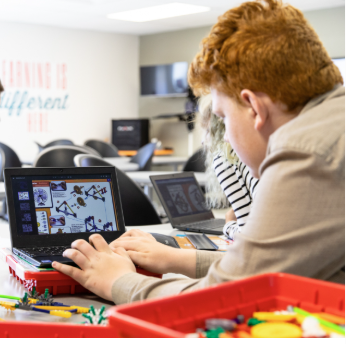Vocational high school programs have been a valuable educational path for students who want to learn practical skills and enter the workforce directly after graduation. In recent years, these programs have been evolving rapidly, adapting to changes in technology, industry needs, and student aspirations. As we look to the future, vocational education is becoming more dynamic, offering students even more opportunities to thrive in their careers.
A Shift Toward Tech-Driven Careers
One of the most significant changes in vocational education is the growing emphasis on technology-driven careers. In today’s world, almost every industry, from healthcare to manufacturing, relies on advanced technologies. As a result, vocational programs are incorporating cutting-edge fields such as robotics, artificial intelligence, data analytics, and cyber security into their curricula.
By introducing these technologies early in students’ education, vocational high schools are preparing them for high-demand jobs that didn’t exist a decade ago. This shift not only makes the programs more relevant but also helps students develop skills that are crucial in the rapidly changing job market.
Hands-On Learning and Real-World Experience
A major benefit of vocational education is the focus on hands-on learning. Unlike traditional academic programs, where students primarily learn through textbooks, vocational programs combine classroom instruction with practical experience. Students often spend a significant portion of their time working in labs, apprenticeships, or internships. This real-world exposure helps students build confidence in their abilities and makes them more attractive to potential employers.
As we move forward, vocational high schools are expanding their partnerships with local businesses and industries to offer even more internships, mentoring programs, and job-shadowing opportunities. These collaborations give students a direct path to employment and a clear understanding of industry expectations.
A Growing Variety of Career Paths
Vocational programs are also broadening their scope, offering career paths in diverse fields beyond traditional trades like carpentry or plumbing. For instance, students can now explore careers in health care, environmental sciences, digital marketing, and even entrepreneurship. This increased variety ensures that students have a wide array of options to choose from, helping them find a career that suits their interests and talents.
In fact, many vocational schools are even offering specialized certifications in fields like health informatics, sustainable energy, and culinary arts. These certifications give students an edge in the job market and help them stand out to employers who are looking for specific skill sets.
Emphasizing Soft Skills and Work Readiness
While technical skills are important, future vocational programs are also placing a strong emphasis on soft skills such as communication, teamwork, problem-solving, and critical thinking. These skills are essential for success in any career, and employers across all industries value them highly.
Vocational high schools are incorporating workshops, group projects, and industry simulations into their programs to ensure that students not only gain technical expertise but also develop the interpersonal skills needed to succeed in the workplace. By blending hard skills with soft skills, these programs are preparing students for well-rounded careers.
The Role of Career Guidance and Counseling
As vocational education continues to evolve, career guidance and counseling are playing an even more critical role. With the wide variety of options available, students need help navigating their choices. Career counselors in vocational schools are working closely with students to help them explore their interests, assess their strengths, and select the best program to match their goals.
Additionally, these counselors are helping students understand the long-term benefits of vocational education, including the potential for high-paying jobs, career stability, and opportunities for growth. By offering tailored advice, vocational schools are ensuring that students make informed decisions about their future.
Conclusion
The future of vocational high school programs is bright. With a growing emphasis on technology, real-world experience, diverse career options, and soft skills development, vocational education is equipping students with the tools they need to succeed in the workforce. As industries continue to evolve, vocational programs will adapt, ensuring that students are always prepared for the jobs of tomorrow.
Vocational high schools are no longer just an alternative to traditional education—they are becoming an essential pathway for students to pursue successful and fulfilling careers in a rapidly changing world.














